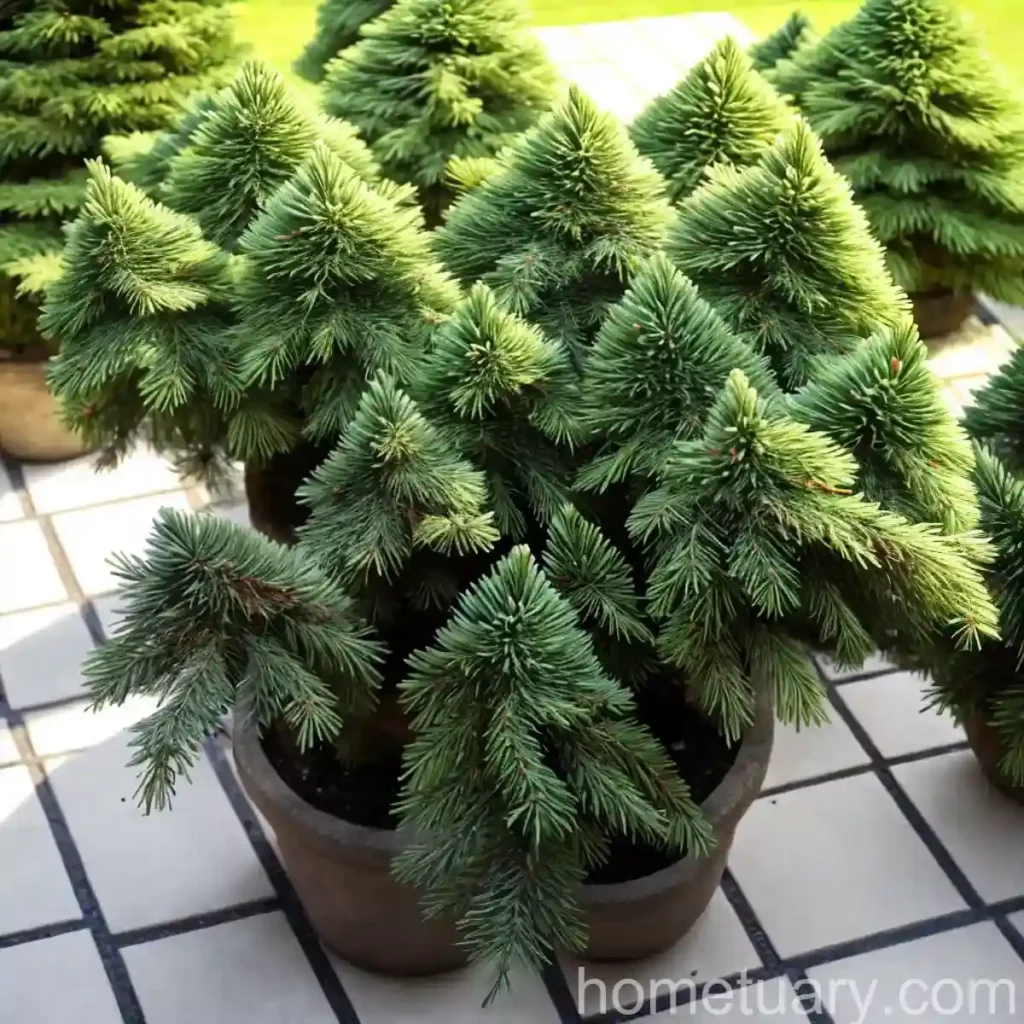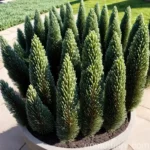Luiang Spruce (Picea likiangensis): A Fascinating Conifer
The Picea likiangensis, commonly known as the Luiang spruce, is an exquisite species of conifer that belongs to the Pinaceae family. This distinct plant species is renowned for its striking appearance and various cultivation, landscaping, and environmental benefits. In this comprehensive guide, we will explore the captivating characteristics, optimal care requirements, propagation techniques, common diseases and pests, botanical insights, and much more about the Luiang spruce.
What is Luiang Spruce (Picea likiangensis)?
The Luiang spruce, scientifically referred to as Picea likiangensis, is a remarkable evergreen coniferous tree native to the Lijiang region in Yunnan, China. It boasts a majestic appearance with graceful, drooping branches, which form an elegant, pyramidal crown. The Luiang spruce is known for its vibrant green foliage and its ability to thrive in various landscapes, from mountainous regions to ornamental gardens.
Key Takeaways – Luiang Spruce (Picea likiangensis)
Before delving deeper into the care and cultivation aspects of the Luiang spruce, let’s summarize the key takeaways about this captivating plant:
- Scientific Name: Picea likiangensis
- Common Names: Luiang spruce tree
- Habitat: Native to the Lijiang region in Yunnan, China
- Characteristics: Graceful, drooping branches, pyramidal crown, vibrant green foliage
- Cultivation: Suitable for mountainous regions and ornamental gardens
- Uses: Landscaping, environmental benefits, ornamental tree
Now, let’s explore the various facets of the Luiang spruce, including its culture, uses, care requirements, common diseases, and much more.
Culture of Luiang Spruce
Understanding the culture of the Luiang spruce is essential for creating an optimal environment for its growth and development. From water and sunlight needs to soil and fertilizer requirements, let’s delve into the cultural aspects of cultivating this distinguished conifer.
1. Uses
The Luiang spruce (Picea likiangensis) serves a multitude of purposes, making it an incredibly versatile plant. Some of its notable uses include:
- Landscaping: The Luiang spruce is commonly used in landscaping projects to add a touch of elegance and vibrancy to both natural and designed landscapes.
- Environmental Benefits: Its presence contributes to biodiversity, provides a wildlife habitat, and aids in environmental conservation.
- Ornamental Tree: With its graceful appearance and vibrant foliage, the Luiang spruce is often planted as an ornamental tree in gardens and parks.
2. Water
One of the most critical aspects of caring for the Luiang spruce is providing it with the appropriate amount of water. Although it is a resilient tree, it thrives in well-drained soil and regular watering, especially during its initial establishment phase. Once established, it can tolerate periods of drought but benefits from occasional deep watering during dry spells.
3. Sunlight
The Luiang spruce thrives in full to partial sunlight. It should be planted in a location that receives ample sunlight throughout the day, especially during the growing season. Adequate sunlight ensures the development of vibrant, healthy foliage and promotes the overall well-being of the tree.
4. Fertilizer
To support the growth and vitality of the Luiang spruce, it is essential to provide it with a balanced fertilizer formulated for evergreen trees. Fertilization can be carried out in early spring before new growth begins, and again in late spring or early summer if necessary. Applying a slow-release fertilizer provides the tree with sustained nutrients for consistent growth.
5. Soil
The Luiang spruce thrives in well-drained, slightly acidic soil. It prefers soil that is rich in organic matter and has good drainage properties. When planting or transplanting a Luiang spruce, it is crucial to ensure that the soil provides the appropriate balance of moisture retention and drainage to support the tree’s root system.
6. Pruning
Pruning is essential to maintain the shape and health of the Luiang spruce. It is best to prune the tree during the dormant season to remove any dead, damaged, or overgrown branches. Additionally, light pruning can be carried out to shape the tree and promote a compact, elegant appearance.
Propagation of Luiang Spruce
Propagation techniques play a vital role in cultivating and preserving the Luiang spruce. Whether through seeds, cuttings, or grafting, understanding the various propagation methods is crucial for expanding the population of this enchanting conifer.
1. Container
Propagation of the Luiang spruce can be achieved through container gardening, particularly when using cuttings or grafting methods. Container propagation provides a controlled environment, making it easier to monitor the growth and development of the new plants.
2. Popularity
The Luiang spruce has garnered popularity among horticulturists, landscapers, and garden enthusiasts for its captivating appearance and versatile uses. Its elegant silhouette and vibrant foliage make it a sought-after addition to both natural and curated landscapes.
Common Diseases and Pests
Like all plant species, the Luiang spruce is susceptible to certain diseases and pests that can affect its health and appearance. Identifying and addressing these issues is crucial for maintaining the vitality of the tree.
1. Disease Diagnosis
Several common diseases can affect the Luiang spruce, including needle cast, root rot, and canker diseases. Regular monitoring of the tree’s foliage, bark, and overall appearance can aid in early disease diagnosis. Prompt intervention and appropriate treatments can help mitigate the impact of these diseases.
2. Common Pests
Pests such as spider mites, adelgids, and certain beetles can pose a threat to the Luiang spruce. Regular inspection of the tree for signs of pest infestation, such as discoloration, webbing, or visible pests, can help in early pest detection. Implementing integrated pest management strategies can effectively address pest issues while minimizing environmental impact.
Botanist’s Tips for Luiang Spruce Care
As a botanist, it is imperative to provide insights and recommendations for the optimal care and cultivation of the Luiang spruce. By incorporating best practices and botanical expertise, the longevity and vitality of this remarkable conifer can be upheld.
1. Fun Facts
- The Luiang spruce is known for its golden leaves, which add a stunning visual appeal to the tree, especially during the fall season.
- Its winter hardiness allows it to thrive in colder climates, retaining its evergreen beauty even during the winter months.
- The Luiang spruce holds cultural significance in the regions where it is native, often being revered for its symbolic representation and environmental contributions.
Links to External Resources
For additional information about the Luiang spruce, its characteristics, and cultivation, you can explore the following external resources:
- The Gymnosperm Database – Picea likiangensis
- Royal Horticultural Society – Luiang Spruce
- Missouri Botanical Garden – Picea likiangensis
In conclusion, the Luiang spruce (Picea likiangensis) stands as a captivating and enduring symbol of natural beauty and resilience. Its enchanting foliage, graceful appearance, and various uses make it a cherished addition to diverse landscapes and a valuable component of biodiversity.
By understanding and embracing the unique characteristics and cultural significance of the Luiang spruce, we can further appreciate and celebrate the remarkable contributions of this extraordinary conifer to our natural world.















